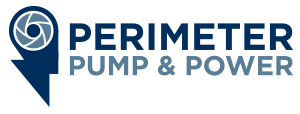What Would Water Harvesting Look Like On My Property?
Some of my blog writes about directing water away from your home. As we have seen the sudden deluge of a possible future of rain and windstorm, water that collects in and around your house can have disastrous results during normal precipitation levels, not to mention catastrophic downpours that knock out the power and let water freely flow into your basement, crawlspace or main floor.
Water Harvest Design in British Columbia
Water harvesting is the simple act of saving rain water during the winter (or any time of year, really) for future use. One of the issues that makes this difficult is that we’re tight on space in the urban areas of Vancouver Island and the Lower Mainland, so we need to take advantage of our vertical space more so than the horizontal.
This means that the best place to store all that winter wetness is underground. A further advantage to this is that water will flow into your collection tank easier because of gravity.
Underground Tanks
We’ve installed plenty of underground tanks in the yards of older homes, but the best time to install is during construction so you’re not disturbing the land. Underground tanks can be much larger than overground tanks depending on the requirements of your property. They can be attached to sprinklers and irrigation systems that require power and a pump, but you’ll still be saving money with rainwater that’s going to fall anyways, especially in the winter and spring months. And you will be doing your part in recycling useful water.
Why not spread the rain out and save it for a day you’ll really need it?
Overground Tanks
Think of your standard rain barrel. Water harvesting technology has come a long way in the last decade, to the point where you can install tanks that look like large planters or simple brick retaining walls. Just let the rain fall and then fill up your watering tank from a valve and you’re on on your way to good water harvesting habits.
Overground storage systems are usually installed on an existing structure and are designed to fit in and take up as little space as possible. Overground tanks can collect water on their own, or they can be hooked up to gutter systems to capture every drop of water that falls on your house.
Further Benefits of Rainwater Harvesting
The benefit we all care about the most is the savings on our utility bill. The more water we save the less we’ll need to pay for in June when the sun shines for two weeks straight.
However, there’s more at work here:
- rainwater harvesting lessens the burden on your municipal drainage system
- with a higher supply of water being kept, the demand for water goes down, which means water prices also go down
- local consumption of fresh water is diminished, which simply means there’s more opportunity and more water to contribute to a bigger picture water crisis
The benefits of rainwater harvesting far outweighs the costs, but yeah, there are initial costs involved. However, it won’t take long for the investment to be worth it, both in your backyard and elsewhere in the world where water isn’t so readily available. Contact us to give for a referral for a great Rainwater Harvesting company. Of course, we will help in the design.
